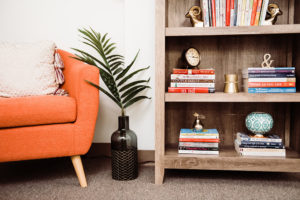Using Play to Boost Your Well-Being
How often do you let yourself play?
Do you remember how carefree childhood felt when you spent the day playing, running around trying to tag friends or making up games to pass the time? You had all the time in the world to enjoy yourself. You weren’t worried about getting anything done or doing something productive with that time. It’s interesting to consider how we lose our freedom to play as we age.
Once we hit a certain age, the room for play in our life decreases with each passing year. Our focus shifts from activities for fun to adult responsibilities, which usually revolve around completing a task, running an errands, learning something new, or some other productive activity we deem worthwhile.
But what is the cost of this focus on productivity in adulthood? Believe it or not, the cost can be a lot.
In this New York Times article, play is said to be “something that’s imaginative, self-directed, intrinsically motivated and guided by rules that leave room for creativity.” The National Institute for Play describes play as a state of being and in their book about play, they say that play occurs when you are “absorbed in an activity that provides enjoyment and a suspension of sense of time. And play is self-motivated so you want to do it again and again.” In essence, play can be defined as something that is done purely for the sake of enjoyment and does not need to focus on productivity or results.
When we consider that play does not revolve around getting something done, we can see how little we play as adults. However, studies actually show that play can have a significant positive impact on both our mental and physical health.
According to research, play can decrease stress, lead to positive psychological functioning, help boost creativity, release endorphins (the “feel good” hormones), and improve collaboration. And since play generally occurs when you’re absorbed in an activity you enjoy, it can also help you practice mindfulness and strengthen your ability to be present and in the moment.
Believe it or not, it doesn’t have to be hard to find ways to incorporate more play into your life. Here are some of our favorite types of play activities that you can integrate into your routines:
Join a sports league
Whether it’s pickleball, kickball, softball, or flag football, joining a sports league can help you incorporate play into your week.
Do something for pleasure at home
As adults, we often forget to include pleasure in our daily life. Reading a fun book or letting yourself lose track of time in a puzzle are two easy ways to play at home.
Do a “kids” activity
Do something that you might not normally do… let yourself gaze at the animals on a trip to the zoo, kick your legs while you swing high on the swings at your local playground, or have a tetherball competition with a friend.
Pick up a new hobby
Try something new and see if anything captures your interest and puts you in a “flow” state of mind… pottery, painting, gardening, or even wine tasting are all fun activities that can help you proactively play!
Learning to play more
Therapeutically speaking, play is a valuable tool that clients can use to reconnect with happiness and joy or to help build better work-life balance in their lives. Especially if you struggle giving yourself permission to relax or have downtime, play can be an easy way to give your brain some stress-free time to unwind and rejuvenate.
If you’re struggling to build more play into your life and want the support of one of our therapists, reach out to schedule a session. We’re here to help.
Photo by Andrea Piacquadio from Pexels



